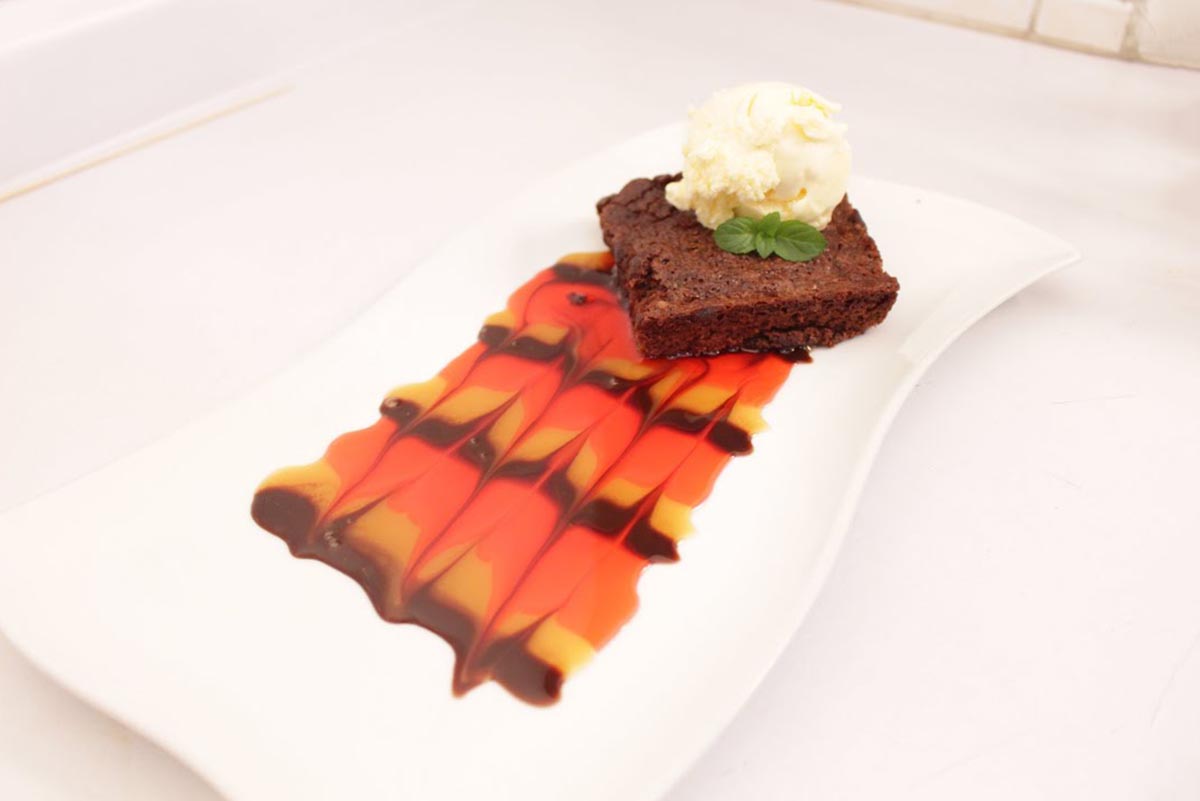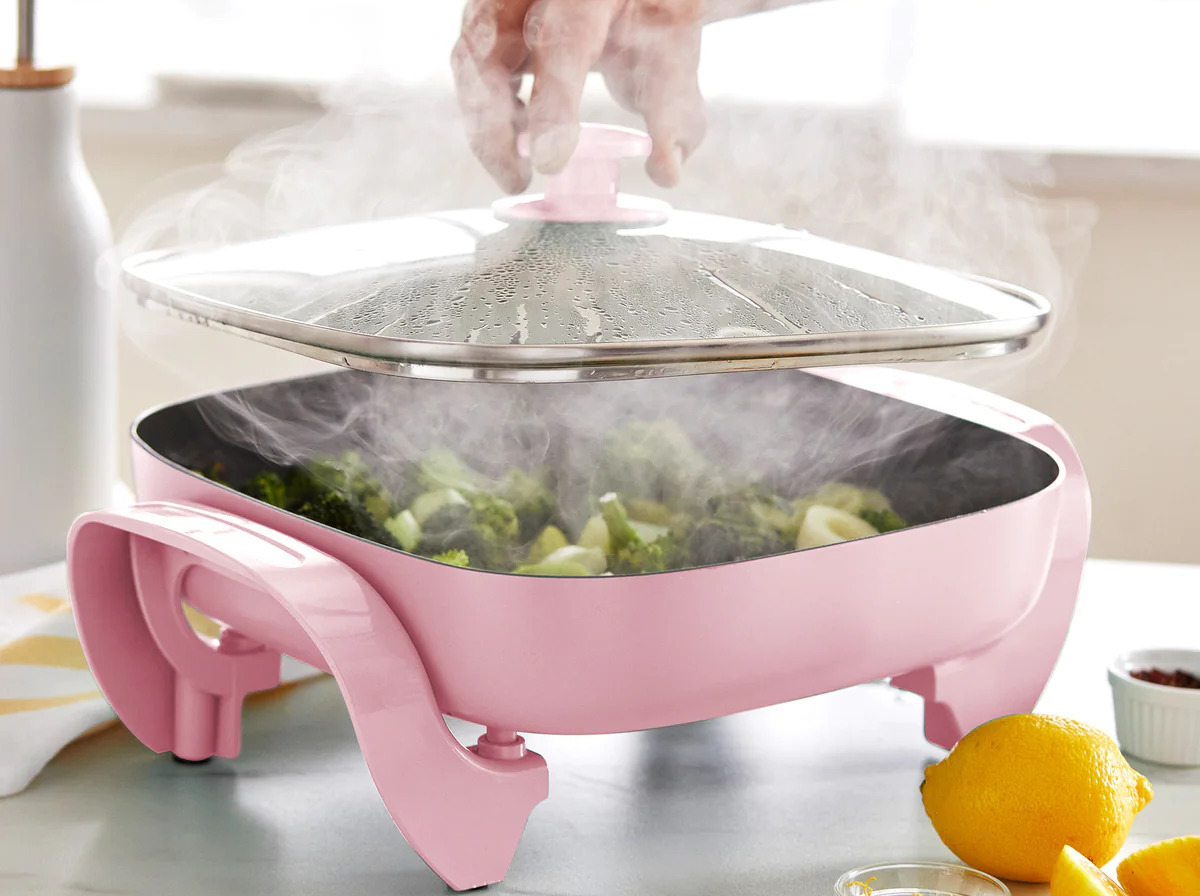Home>Dining>Tableware>When Selecting The Components Of A Dessert Plate, What Should You Decide?


Tableware
When Selecting The Components Of A Dessert Plate, What Should You Decide?
Modified: November 2, 2024
Discover the key considerations when selecting tableware components for your dessert plate. Choose the perfect pieces to enhance your dining experience and impress your guests.
(Many of the links in this article redirect to a specific reviewed product. Your purchase of these products through affiliate links helps to generate commission for Storables.com, at no extra cost. Learn more)
Introduction
When it comes to creating a delicious and visually appealing dessert plate, there are several important decisions to be made. Every component plays a crucial role in enhancing the overall experience for the diner. From the selection of flavors and textures to the presentation and garnishes, each choice contributes to a harmonious and enticing dessert plate.
Creating the perfect dessert plate requires a thoughtful and balanced approach. It’s not just about combining random ingredients, but rather a careful consideration of the flavor profile, texture, colors, and presentation that will leave a lasting impression on the diner. Taking into account factors such as seasonality, dietary restrictions, and potential pairings with other desserts or beverages also adds a level of complexity to the decision-making process.
In this article, we will explore the key factors to consider when selecting the components of a dessert plate. By understanding the importance of each element and how they work together, you will be able to create a truly exceptional and memorable dessert experience.
Key Takeaways:
- Creating a memorable dessert plate involves balancing flavors, textures, and presentation. Consider seasonality, dietary restrictions, and beverage pairings to elevate the dining experience.
- Carefully select garnishes and decorations to enhance the visual appeal and flavor of the dessert plate. Complement flavors, add texture, and consider seasonal accents for a truly special presentation.
Read more: When Should Charger Plates Be Removed?
Flavor Profile
One of the most important considerations when selecting the components of a dessert plate is the flavor profile. Each individual component must work harmoniously with each other, creating a balanced and complementary flavor experience for the diner.
Start by identifying the primary flavor or flavors that you want to showcase in your dessert. It could be something classic like chocolate, vanilla, or fruit, or you may choose to experiment with unique flavor combinations. Once you have chosen the primary flavor, consider how you can enhance and accentuate it through different components.
For example, if you have a chocolate-based dessert, you may choose to pair it with a tart raspberry coulis or a creamy caramel sauce. These contrasting flavors can add depth and complexity to the dish, making it more interesting and satisfying for the palate. Additionally, incorporating different textures, such as a crunchy nut brittle or a silky smooth mousse, can further enhance the overall flavor experience.
When selecting the components of a dessert plate, it’s also important to consider the progression of flavors. Start with a lighter and more delicate flavor, and gradually build up to stronger and bolder flavors. This allows the diner’s palate to adjust and fully appreciate each component.
Don’t be afraid to experiment with unconventional flavor combinations. Sometimes, the most unexpected pairings can result in extraordinary taste experiences. However, always make sure that the flavors complement and balance each other rather than overpowering or clashing with one another.
Ultimately, the flavor profile should delight the taste buds and leave the diner craving for more. By carefully selecting each component based on its flavor contribution, you can create a dessert plate that is truly unforgettable.
Texture
Texture is another crucial factor to consider when selecting the components of a dessert plate. It brings a sensory dimension to the dish, adding intrigue and interest to each bite.
Contrasting textures can create a more dynamic and enjoyable eating experience. Incorporating a variety of textures, such as creamy, crunchy, chewy, and velvety, can create a delightful sensation in the mouth. For example, pairing a smooth and rich chocolate ganache with a crisp tuile or a crunchy praline can provide a satisfying contrast and elevate the overall experience.
Think about how the textures of each component can complement or contrast with each other. A velvety mousse paired with a crumbly biscuit base or a silky fruit compote served with a crunchy almond crumble can create an interesting interplay of textures that keeps the palate intrigued.
The temperature of the components can also contribute to the overall texture experience. Incorporating both warm and cold elements adds another layer of complexity. For instance, serving a warm chocolate lava cake with a scoop of cold vanilla ice cream creates a delightful contrast of hot and cold, soft and icy.
Consider the way the textures change as the dessert is savored. Will the components soften or hold their texture over time? Combining ingredients that maintain their integrity throughout the dining experience ensures that the dessert remains enjoyable from the first bite to the last.
Additionally, take into account the balance between the different textures. While contrast is desirable, it is important to create a harmonious balance that does not overwhelm or confuse the palate. Each texture should enhance the overall experience without dominating the other components on the plate.
By carefully selecting and contrasting textures, you can create a dessert plate that is not only visually enticing but also offers a multi-sensory experience that engages both the taste buds and the senses.
Colors and Presentation
When selecting the components of a dessert plate, the visual aspect is just as important as the taste and texture. Colors and presentation play a significant role in captivating the diner’s attention and creating an enticing visual experience.
Consider the color palette of the dessert plate. Are you going for a monochromatic look, or do you want to incorporate a range of vibrant colors? The colors should be visually appealing and evoke a sense of excitement and anticipation. For example, a trio of desserts in different shades of pastel or a vibrant fruit compote served with a sprinkling of fresh herbs can create a visually stunning plate.
Think about the contrast of colors as well. Pairing light and dark shades or complementary colors can create a visually striking composition. For instance, a rich chocolate cake served with a bright berry sauce or a vibrant lemon tart garnished with a dusting of powdered sugar can make the dessert visually captivating.
Consider the presentation and arrangement of each component on the dessert plate. Pay attention to the placement and spacing to create a visually balanced and appealing composition. Experiment with different shapes and heights to add dimension and depth to the plate.
Garnishes and decorations can also elevate the visual appeal of the dessert plate. Fresh fruits, edible flowers, chocolate curls, or a drizzle of sauce can add a finishing touch that enhances both the look and the taste of the dessert. However, be cautious not to overcrowd the plate with decorations, as it may distract from the main components.
Furthermore, consider the choice of serving vessels or plates when you set your table. The presentation can be enhanced by using elegant bowls, glassware, or decorative plates that complement the style and theme of the dessert.
When setting the table, remember that the visual appeal of the dessert plate, including the correct dessert plate size, creates a memorable first impression for the diner. By carefully selecting the colors, arranging the components thoughtfully, and adding visually appealing garnishes, you can create a dessert plate that is not only a delight to the taste buds but also a feast for the eyes.
Balance and Harmony
When selecting the components of a dessert plate, achieving balance and harmony is key. Each element should contribute to the overall composition in a way that creates a cohesive and well-rounded experience for the diner.
Consider the overall flavor profile, texture, and colors of each component. Are they complementary or do they compete with each other? Strive for a harmonious combination where each component enhances, rather than overpowers, the others. For example, if you have a rich and decadent chocolate cake, balance it with a lighter and refreshing fruit component to create a harmonious contrast.
Another aspect of balance to consider is the sweetness level. Ensure that the dessert plate is not overly sweet, as it can become overwhelming and cloying. Balance the sweetness with elements that offer contrasting flavors or a touch of acidity to cut through the richness. This could be achieved through a citrus zest, a tangy fruit sauce, or a sprinkle of sea salt.
Think about the portion sizes of each component. Avoid overwhelming the diner with a large serving of a single item. Instead, offer smaller portions of each component to encourage exploration and the experience of different flavors and textures. This also allows the diner to enjoy the dessert plate without feeling overly stuffed or weighed down.
Consider the visual presentation in terms of balance as well. The placement and arrangement of each component should create a visually appealing composition. Think about the different shapes, sizes, and heights of the elements, and aim for a balanced distribution on the plate. Avoid overcrowding or leaving empty spaces, as both can disrupt the overall harmony.
Additionally, consider the overall dining experience and the progression of flavors throughout the meal. If the dessert plate is part of a multi-course meal, it should seamlessly transition from the previous courses and set the stage for the next course. The flavors should build on each other to create a cohesive and enjoyable culinary journey.
By paying attention to the balance and harmony of the components, you can create a dessert plate that is not only visually appealing but also offers a well-rounded and satisfying experience to the diner.
Seasonality
Seasonality plays a significant role in selecting the components of a dessert plate. Incorporating seasonal ingredients not only ensures freshness and quality but also adds a touch of novelty and excitement to the dining experience.
When choosing ingredients for your dessert plate, consider what is currently in season. It could be juicy berries in the summer, crisp apples in the fall, or vibrant citrus fruits in the winter. By incorporating seasonal produce, you not only support local farmers and sustainable practices, but you also take advantage of ingredients when they are at their peak flavor and availability.
Seasonal ingredients tend to have a natural affinity for each other and can create a harmonious flavor profile. For example, combining ripe peaches with fragrant basil in a summer dessert can create a delightful and refreshing combination. Additionally, seasonal ingredients often require little embellishment, allowing their natural flavors to shine through.
Consider the visual appeal as well. Seasonal ingredients bring vibrant colors and textures to the dessert plate. Think of the brilliant reds and oranges of autumn or the luscious greens and purples of spring. By incorporating these seasonal hues, you can create a visually stunning dessert plate that captivates the diner’s attention.
Moreover, the use of seasonal ingredients allows you to connect with the environment and create a sense of time and place. It adds a story to the dessert and can evoke memories and emotions associated with that season. For example, a warm and comforting spiced pumpkin dessert in the fall can evoke feelings of coziness and nostalgia.
When selecting seasonal ingredients, it’s essential to do some research and understand what is available in your local region. Different areas may have different growing seasons, so it’s important to adapt your dessert plate accordingly. Talk to local farmers or visit farmers’ markets to get the freshest and most seasonal ingredients.
By embracing seasonality in your dessert plate, you not only create a culinary experience that is in tune with nature but also offer a unique and memorable dining experience that celebrates the flavors and bounties of each season.
When selecting components for a dessert plate, consider a balance of flavors, textures, and colors. Aim for a variety that complements the main dessert and creates a visually appealing presentation.
Dietary Restrictions
When selecting the components of a dessert plate, it is crucial to consider dietary restrictions and accommodate the needs of all diners. By offering options that cater to various dietary preferences and restrictions, you can ensure that everyone can enjoy a delicious dessert plate.
Start by identifying common dietary restrictions such as gluten intolerance or allergies to nuts or dairy. There are now countless alternatives available in the market that cater to these dietary needs without compromising on taste and texture.
For those with gluten intolerance or celiac disease, incorporate gluten-free flours and ingredients in your dessert recipes. Experiment with alternative grains like almond flour, rice flour, or coconut flour, which can produce equally delicious results.
When it comes to dairy-free options, consider using plant-based milks such as almond milk, soy milk, or coconut milk in your dessert preparations. There are also numerous dairy-free alternatives to butter and cream, which can be used to create creamy and indulgent desserts.
Be mindful of those with nut allergies by offering nut-free options or clearly labeling dishes that contain nuts. Consider using alternative ingredients like seeds, such as sunflower or pumpkin seeds, as a nut-free alternative for added texture and flavor.
Additionally, consider the needs of those following a vegan or vegetarian diet. By omitting animal products, you can create stunning desserts using plant-based ingredients. Experiment with vegan-friendly substitutes like aquafaba (chickpea brine) as an egg replacer, coconut oil as a butter substitute, or date syrup as a natural sweetener.
It is important to clearly label desserts that are vegan, gluten-free, nut-free, or suitable for other dietary restrictions. This will help diners easily identify the desserts that they can enjoy without concern.
Ask your diners about any specific dietary restrictions or allergies ahead of time, or offer a menu that clearly indicates the ingredients and potential allergens. This ensures that you can prepare ahead and create an inclusive dessert plate that caters to everyone’s needs.
By considering and accommodating dietary restrictions, you demonstrate your commitment to providing a thoughtful and inclusive dining experience, where everyone can enjoy a delicious and satisfying dessert plate.
Pairing with Other Desserts
Pairing different desserts together on a dessert plate can create a harmonious and diverse tasting experience. By carefully considering how different flavors, textures, and ingredients complement or contrast with each other, you can offer a well-rounded and indulgent dessert plate.
Start by identifying the primary dessert that will anchor the plate. This could be a decadent chocolate cake, a refreshing fruit tart, or a creamy cheesecake. Once you have selected your anchor dessert, consider how other desserts can enhance and elevate its flavors.
Look for desserts that offer complementary flavors. For example, if the anchor dessert is rich and chocolatey, consider pairing it with a light and citrusy dessert, such as a lemon meringue tart or a zesty orange sorbet. The contrasting flavors will create a more dynamic and interesting experience for the diner.
Consider the textures of the desserts as well. Pairing a smooth and creamy dessert with a crunchy or crumbly one can create a satisfying contrast. For instance, a silky panna cotta can be accompanied by a delicate almond biscotti, creating a delightful interplay of textures in each bite.
Think about the balance of sweetness between the different desserts. If one dessert is particularly sweet, pair it with a dessert that offers a different level of sweetness. This can help to prevent the overall dessert plate from being overly sugary and overwhelming. For instance, a rich chocolate torte can be balanced with a tangy raspberry sorbet to create a harmonious dessert combination.
Consider the visual presentation as well. Select desserts that differ in appearance, such as a creamy white dessert alongside a vibrant berry tart or a colorful fruit compote. This creates a visually appealing plate that immediately grabs the diner’s attention and builds anticipation.
Lastly, take into account the portion sizes of each dessert. Ensure that each dessert is presented in a size that allows the diner to savor it without feeling overwhelmed. You want the diner to be able to enjoy each dessert individually and appreciate the unique qualities it brings to the overall experience.
By thoughtfully selecting and pairing different desserts together on a dessert plate, you can create an exceptional and memorable dining experience. The combination of flavors, textures, and visual appeal will leave the diner with a sense of indulgence and satisfaction.
Wine or Beverage Pairings
Pairing the right wine or beverage with a dessert plate can elevate the flavors and enhance the overall dining experience. Consider the following tips when selecting the perfect pairing:
First, consider the flavor profile of the dessert. Is it rich and decadent, light and floral, or fruity and refreshing? The flavors of the dessert should complement the flavors of the wine or beverage. For example, a dark chocolate mousse pairs well with a full-bodied red wine like Cabernet Sauvignon, while a citrusy lemon tart goes perfectly with a crisp and acidic Sauvignon Blanc.
Think about the sweetness level of the dessert and the wine or beverage. It’s important to strike a balance between the two. A dessert that is sweeter than the wine may make the wine taste bitter or dull in comparison. If the dessert is very sweet, consider a wine with higher residual sugar to match the sweetness. Alternatively, you can pair it with a beverage that offers a contrasting flavor, such as a sparkling wine, a dessert wine, or a fruit-infused cocktail.
Consider the body and intensity of both the dessert and the wine or beverage. A light and delicate dessert pairs well with a lighter wine, while a robust and intense dessert can stand up to a bolder wine. For example, a creamy cheesecake can be paired with a rich and buttery Chardonnay, while a tropical fruit salad may be best enjoyed with a crisp and effervescent Prosecco.
Take into account the acidity of both the dessert and the wine or beverage. If the dessert is acidic, like a citrus-based dessert, opt for a wine or beverage with higher acidity to create a harmonious balance. Conversely, if the dessert is less acidic, a wine with lower acidity can provide a smoother and more balanced pairing.
Consider the temperature of both the dessert and the wine or beverage. Generally, lighter and more delicate desserts pair well with chilled wines, while richer and more indulgent desserts can be accompanied by fortified wines or spirits served at room temperature. Explore the different serving temperatures to find the best balance and experience for your dessert plate.
Ultimately, experimenting with different wine or beverage pairings can be a fun and exciting journey. Don’t be afraid to get creative and try new combinations. Wine or beverage pairings can enhance the flavors and provide a delightful sensory experience when enjoyed alongside a well-crafted dessert plate.
Read more: When Should You Plant Seeds
Garnishes and Decorations
Garnishes and decorations are the finishing touches that bring a dessert plate to life. They add visual appeal, texture, and even additional flavors to the overall composition. When selecting garnishes and decorations for your dessert plate, consider the following:
Complementary Flavors: Choose garnishes that enhance and complement the flavors of the dessert. For example, a berry tart can be adorned with a sprinkle of fresh mint leaves to add a refreshing herbal note. Alternatively, a chocolate dessert can be complemented with a dusting of cocoa powder or a drizzle of chocolate sauce to amplify the chocolatey experience.
Textural Contrast: Garnishes can provide an additional layer of texture to the dessert plate. Consider adding a crunchy element like toasted nuts or caramelized sugar shards. This can create a delightful contrast to the smooth and creamy components of the dessert.
Visual Appeal: Garnishes and decorations have a significant impact on the visual presentation of the dessert plate. They can add pops of color, visual interest, and heighten the overall appeal of the dish. Fresh fruits, edible flowers, or a simple dusting of powdered sugar can instantly elevate the aesthetics of the dessert plate.
Seasonal Accents: Incorporating seasonal accents in the garnishes and decorations adds an extra touch of novelty and freshness. For example, during the winter season, a sprinkle of crushed candy cane or a sprig of rosemary can evoke a festive and cozy atmosphere.
Modesty and Simplicity: It’s important not to overpower the dessert with excessive or elaborate garnishes. The focus should remain on the main components and flavors. Use garnishes sparingly and purposefully to enhance the dessert, rather than allowing them to steal the show.
Edible and Edible-Like: When considering decorations, prioritize using items that are edible or edible-like. While non-edible decorative elements like flowers or faux leaves may be visually appealing, it’s best to ensure that everything on the dessert plate is safe for consumption. If using non-edible decorations, be sure to indicate to guests that they are for decoration purposes only.
Practicality: Consider the practicality of the garnishes and decorations. Will they hold up well on the dessert plate? Make sure they are stable and won’t easily wilt, melt, or crumble. You want the garnishes to enhance the dessert throughout the dining experience.
Remember, garnishes and decorations should enhance the overall experience of the dessert, both visually and in flavor. Their presence should elevate the dessert plate without overwhelming or distracting from the main components. Thoughtfully selected and artfully placed garnishes and decorations can take a dessert plate from ordinary to extraordinary.
Conclusion
Creating a memorable dessert plate is a meticulous process that involves considering various factors. From the flavor profile and texture to the colors, presentation, and garnishes, each component contributes to a harmonious and delightful dining experience. By carefully selecting and pairing the right components, you can create a dessert plate that excites the senses and leaves a lasting impression on the diner.
When choosing the components of a dessert plate, keep in mind the flavor profile and how different flavors can work together in harmony. Experiment with contrasting or complementary flavors to create a dynamic taste experience. Consider the textures of each component and aim for a balance of creamy, crunchy, and smooth elements that engage the palate.
Colors and presentation play a crucial role in capturing the eye and enticing the diner. Select a color palette that is visually appealing and consider the arrangement and placement of each component on the plate. Incorporate garnishes and decorations that add both aesthetic appeal and textural interest to the dessert plate.
Seasonality adds depth and relevance to the dessert plate. By utilizing ingredients that are in season, you not only ensure freshness and quality but also create a connection to nature and a sense of time and place. Embrace the flavors and colors of each season to make your dessert plate truly special.
Accommodating dietary restrictions is essential to creating an inclusive dessert plate. Offer options that cater to different preferences and allergies, using alternative ingredients that do not compromise on taste and quality. Take into account vegan, gluten-free, nut-free, and dairy-free options to ensure that all diners can enjoy the dessert plate without restrictions.
Consider the pairing of desserts with each other, as well as with wines or other beverages. Choose desserts that complement or contrast with each other in flavor, texture, and sweetness. Pair them with wines or beverages that enhance the taste experience, balancing the flavors and intensities.
Finally, garnishes and decorations add the finishing touches to the dessert plate. They provide visual appeal, texture, and additional flavors. Carefully select garnishes that enhance the dessert without overpowering it, and consider the seasonal accents that can bring novelty and freshness to the plate.
In conclusion, creating a well-crafted dessert plate requires attention to detail, creativity, and a balance of flavors, textures, and presentation. Each component should be thoughtfully chosen to create a harmonious and enticing experience for the diner. By considering the factors discussed in this article, you can create a dessert plate that not only satisfies the sweet tooth but also leaves a lasting impression on the guests with its taste, texture, and visual appeal.
Frequently Asked Questions about When Selecting The Components Of A Dessert Plate, What Should You Decide?
Was this page helpful?
At Storables.com, we guarantee accurate and reliable information. Our content, validated by Expert Board Contributors, is crafted following stringent Editorial Policies. We're committed to providing you with well-researched, expert-backed insights for all your informational needs.














0 thoughts on “When Selecting The Components Of A Dessert Plate, What Should You Decide?”